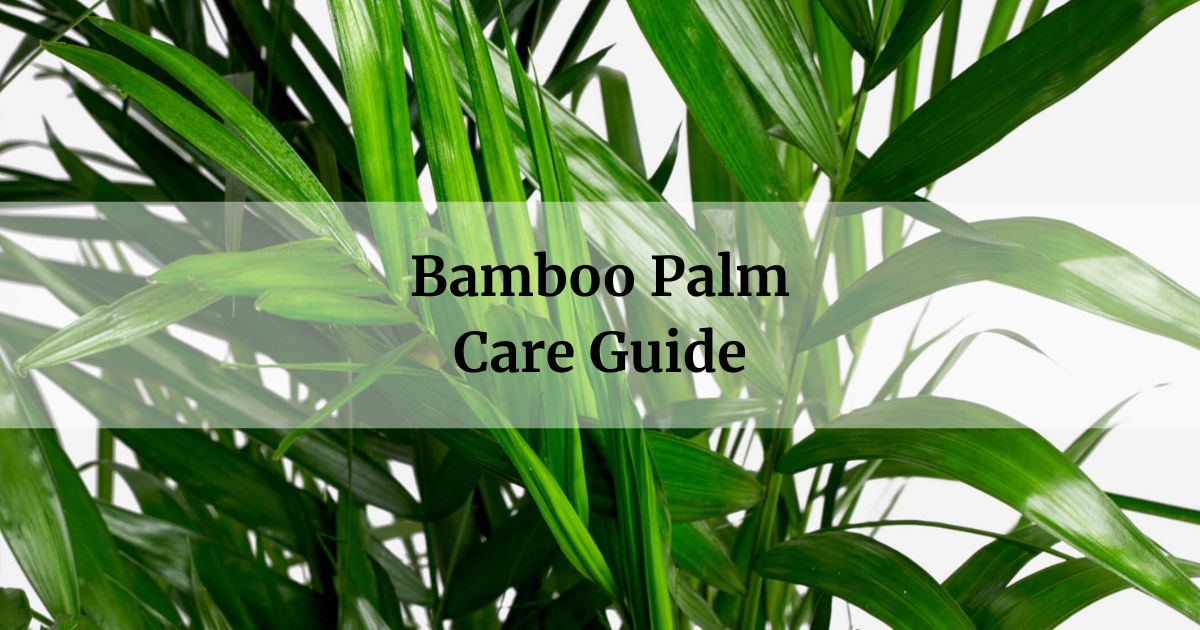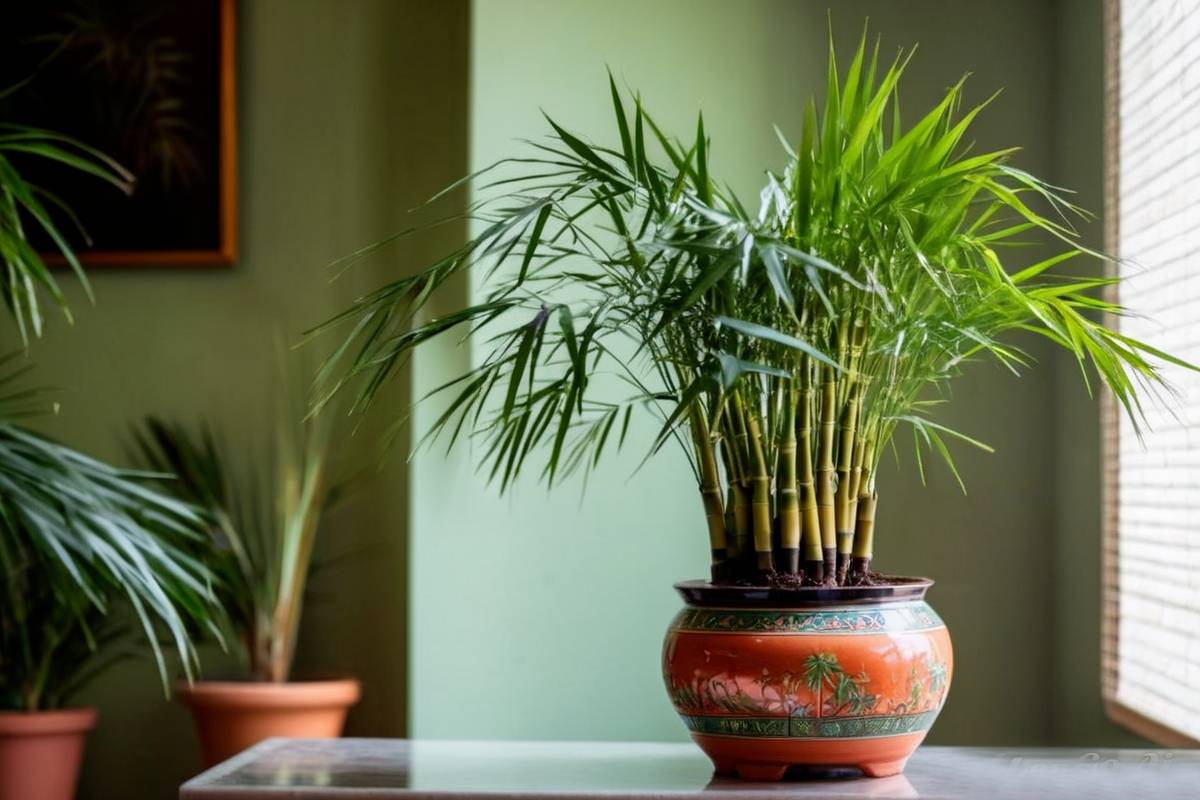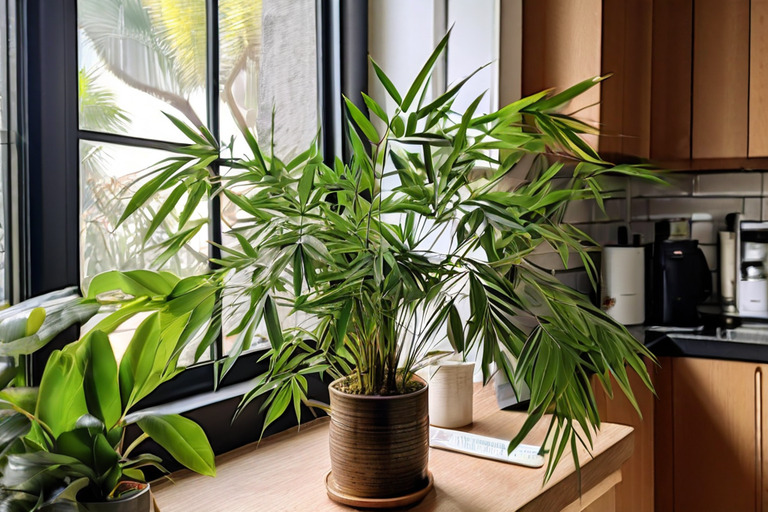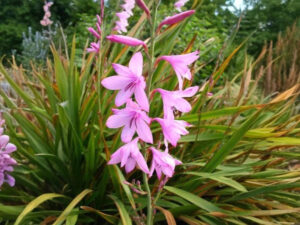
I love the dramatic effect that Bamboo Palm (Chamaedorea seifrizii) has on any room. This plant captivates with its graceful fronds and lush green hue, bringing a tropical vibe to any space.
Key Takeaways:
- Leaf shape and size: Graceful, arching fronds.
- Beginner friendly: Ideal for novice gardeners.
- Water requirements: Keep soil consistently moist but not waterlogged.
- Sunlight requirements: Thrives in bright, indirect light.
- Pot size required: Opt for a well-draining pot slightly larger than the root ball.
In this article
Appearance of Bamboo Palm

The Bamboo Palm features graceful, feathery fronds that create a lush canopy. It boasts a vibrant green hue, adding a refreshing touch to any room.
- Leaf shape and size: Arching fronds with delicate leaflets.
- Flowers: Small yellow flowers may appear in ideal conditions.
- Beginner friendly: Perfect for those new to plant care.
- Water requirements: Keep soil consistently moist but not soggy.
- Sunlight requirements: Flourishes in bright, indirect light.
- Pot size required: Opt for a well-draining pot slightly larger than the root ball.
Light Requirements for Bamboo Palm
The Bamboo Palm thrives in bright, indirect light. For optimal growth, ensure it receives adequate natural or grow lights.
| Light Conditions | Effect on [Bamboo Palm] |
|---|---|
| Bright Indirect Light | Promotes healthy growth |
| Low Light | Tolerated but slows growth |
| Direct Sunlight | Can scorch leaves |
Watering the Bamboo Palm
Maintain consistently moist soil for the Bamboo Palm. Avoid overwatering by allowing the top inch of soil to dry between waterings.
- Water thoroughly when the top inch of soil feels dry.
- Ensure good drainage to prevent waterlogging.
Fertilizing the Bamboo Palm

Sunniland Palm Fertilizer – Hydroponic, Organic, Plant Food
Regular fertilization is key to the Bamboo Palm’s health. Follow these guidelines:
- Spring (March-May): Half-strength balanced fertilizer monthly.
- Summer (June-August): Monthly feeding with balanced fertilizer.
- Fall (September-November): Reduce feeding to every 6 weeks.
- Winter (December-February): Suspend fertilization.
| Month | Recommended Dosage |
|---|---|
| Spring | Half-strength monthly |
| Summer | Monthly balanced feeding |
| Fall | Feed every 6 weeks |
| Winter | Suspend fertilization |
Potting the Bamboo Palm
When repotting, choose a pot slightly larger than the current one with good drainage holes to prevent waterlogging.
- Gently remove the plant from its current pot.
- Place it in the new pot with fresh, well-draining soil.
Propagation of Bamboo Palm
Propagating the Bamboo Palm is best done through division:
- Carefully divide the plant at its base during repotting.
- Ensure each division has roots attached before planting in separate pots.
Growth and Development of Bamboo Palm

For optimal growth, provide moderate humidity, temperatures between 65-80°F (18-27°C), and bright, indirect light for your Bamboo Palm.
Managing Pests and Diseases for Bamboo Palm
Watch out for common pests like spider mites and mealybugs. Treat with insecticidal soap if infestations occur. Ensure proper watering to prevent root rot.
RELATED: 9 Indoor Plants that Purify the Air
Frequently asked questions
How often should I water my Bamboo Palm?
Water when the top inch of soil feels dry.
Does the Bamboo Palm need direct sunlight?
It thrives in bright, indirect light.
How do I propagate a Bamboo Palm?
Divide during repotting for propagation.
In conclusion, caring for a Bamboo Palm is a rewarding experience that adds a touch of tropical elegance to any indoor space.
Happy gardening!







